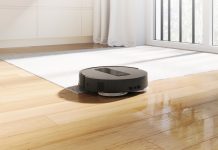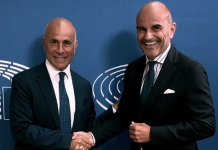ECIA association has released the figures of balance sheets for passive component sales in the world during 2018: the growth was by 24.4%, partly due to quantity increases and partly to rises in prices.

In 2018, passive component sales grew by 24.4% versus 2017. Similarly to what happens for the other component types, the real growth was just by 16.7% in quantity, whereas the 7.7% difference is due to the price rise. It is anyway a consistent increase, exceeding semiconductors’ (13.6%),
The strongest growth occurred in EMEA, followed by Japan and Americas; China, traditional “driving engine” of the sector, scored instead a rise under the world average, whereas the “Rest Asia Pacific” was stable.
The rise of the demand for passive components in the above areas is mostly due to the good trend of the automotive industry. In addition to the bigger number of produced vehicles, in most recent models a higher number of condensers and resistances, i.e. passive, is increasingly used. On the contrary, the demand for these components by China and “Rest Asia Pacific” Countries comes essentially from computer industry and communications, which in 2018 achieved quite modest growths and, for some types of products, were affected by some slight drops.
Typologies and application sectors
In 2018, on a world scale, the gap between the two main application sectors diminished: telecommunications, dropped to about 30%, and automotive, risen to over 25%. Informatics still ranks third, with slightly more than 15%. The remaining 30% is split among consumer electronics (including white goods, too) with 13%, armaments with 7% and miscellaneous industries with 10%.
In EMEA, instead, automotive still holds the first place, with around 55% of the total, followed by miscellaneous industries with 25% approximately.
In terms of typology, on a world scale capacitors still predominate, maintaining their 55% share. The presence of resistors on the contrary increased, grazing 25%. The remaining 20% goes to inductors and to other types.
In EMEA ambit, capacitors reached 40%, whereas resistors and inductors weigh by about 20% each, leaving the last 20% to other types.
Manufacturing
Japan is still the primary manufacturing nation of passive components but in 2018 its share on the total dropped to 22%, accounting for around 12 billion dollars.
Big Japanese Groups Murata, TDK and Taiyo are joined by the United States AVX Corporation and Kemet, the South Korean Samsung and the Chinese Fenghua, headquartered in Hong Kong.
Prospects
Unlike what happens for semiconductors, there are no official forecasts for passive components. However, it is common opinion that the growth slowdown in 2019, foreseen for the first, will involve, to a lesser or bigger extent, all other component types and then also passive, whose real growth is not expected to exceed 10% during the current year.




